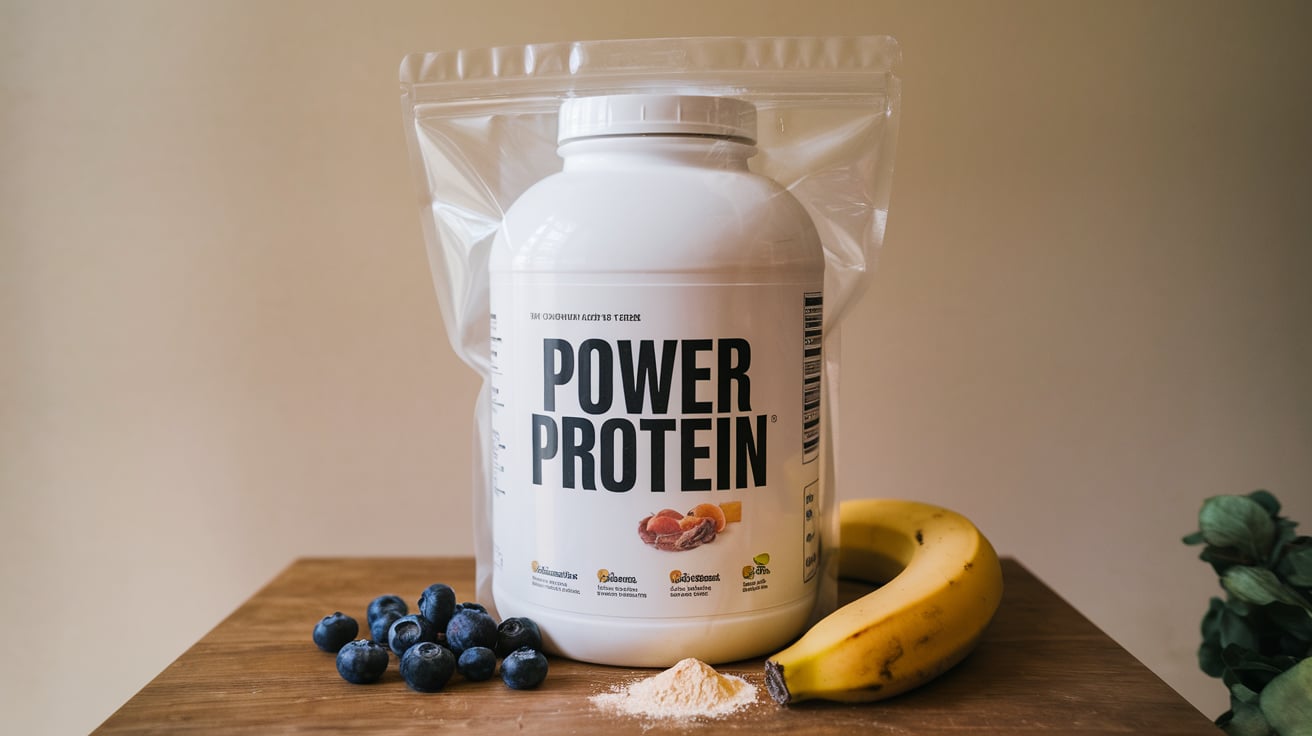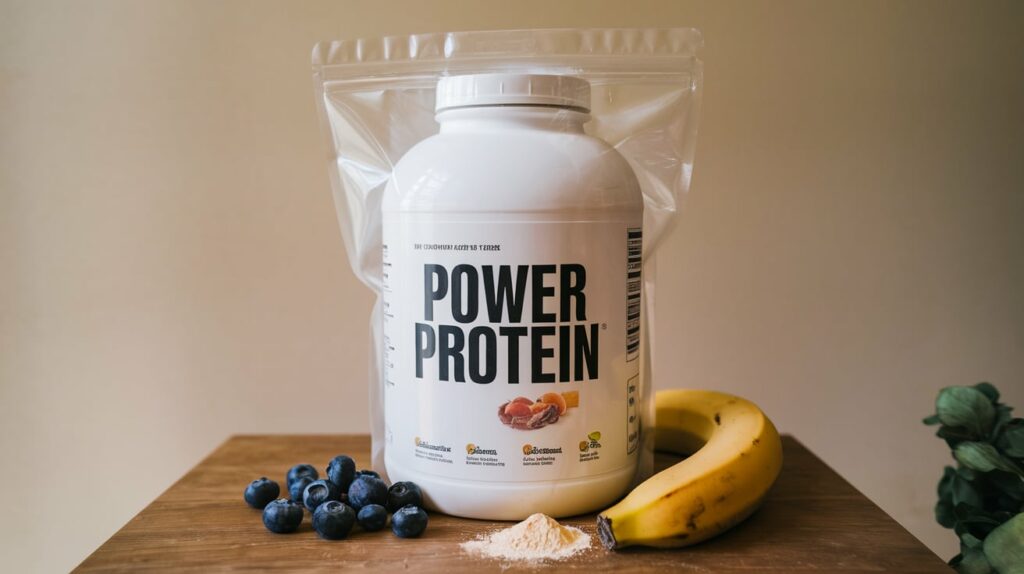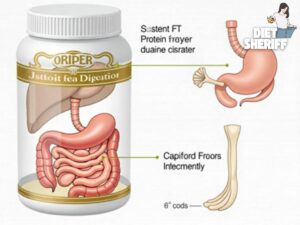Eating expired protein powder might be harmful to your health and reduce the advantages of using the supplement.
Consuming protein powder soon after it expires may cause upset stomach, gas, and bloating. Sometimes having spoiled protein powder can also cause food poisoning.
To make sure you’re eating a safe and useful product, it’s essential to understand how to spot spoiling indicators in protein powder.
Why is it Important to Know How to Identify Spoiled Protein Powder?
It’s important to identify ruined protein powder for a number of reasons. There is multiple reason to avoid having spoiled powder due to its bad effect.

Here’s a thorough explanation of its significance:
Health Risk
Bacterial Contamination:
- Spoiled protein powder might contain mold as well as dangerous bacteria.
- Taking powder that has been tainted can cause food poisoning, which shows as discomfort in the abdomen, nausea, vomiting, and diarrhea.
Related Article: Can a Protein Shake Replace a Meal? What Do Experts Say?
https://gigasecurehome.com/why-is-my-ring-not-notifying-me-of-motion
Toxins:
- Cooking and digesting do not eliminate the poisons produced by some spoilage organisms.
- Serious health problems result from having spoiled protein powder.
Nutritional Efficacy
Degraded Quality:
- Over time, spoiled protein powder may lose its nutritious content.
- The degradation of amino acids and also denaturation of proteins might lessen the effectiveness of the supplement.
Oxidations:
- The powder’s lipids may oxidize when exposed to air and light, which might cause rancidity.
- It lessens the nutritional advantages in addition to altering flavor.
Safety Concerns
Chemical Reactions:
- Protein powder that has been spoiled may change chemically and generate dangerous compounds.
- For instance, peroxides and aldehydes produced by fat oxidation can be toxic if consumed.
Related Article: Are Fairlife Protein Shakes Gluten Free? What You Need to Know!
https://gigasecurehome.com/ring-app-an-error-occurred-please-try-again-later
Allergic Reaction:
- Bacterial as well as mold contamination may intensify pre-existing sensitivities and cause allergic responses.
Sensory Experience
Taste and Smell:
- Protein powder that has been spoiled frequently tastes and smells bad, making it unpleasant.
- These products are discouraged to consume, especially for people who depend on protein supplements for their diet or exercise routine.
Texture:
- The texture of the powder may become clumpy and blend poorly with liquids due to spoilage.
Economic Waste
Cost:
- Protein supplements are not always cheap. Early detection of degradation allows for prompt replacement and avoids needless expenditure.
Related Article: Can You Put Protein Powder in Hot Chocolate? Here’s Why You Should
Storage and Handling Insights
Improper Storage:
- Spoiled powder can be used to identify storage conditions that need attention.
- This information may be used to enhance future storage procedures and increase the shelf life of further supplements.
https://gigasecurehome.com/ring-notification-not-working-on-android
What Are Common Signs Indicating that Protein Powder Has Gone Bad?
In order to safeguard your health, you must be able to recognize spoiled protein powder.
The answer of the concerning question “How to tell if protein powder is bad” is given below:
Rancid Odor: One of the most obvious indications that protein powder has gone bad is a rancid smell. The oxidation of the powder’s lipids is frequently the cause of this smell.
Fats deteriorate with time, especially in the presence of light and air, giving off a distinctly sour scent.
Related Article: Can I Drink a Protein Shake Before Bed to Maximize Gains?
Mold Growth: It is obvious that the powder is no longer safe to eat when visible mold grows.
Visible mold might take the form of black blotches, fuzzy patches, and occasionally powdery growth.
Plastic Smell: A rancid protein powder occasionally gives out an odor reminiscent of plastic.
This suggests that synthetic chemicals are degrading and that there is contamination from other sources.
Sticky and Hard Consistency: The protein powder has likely absorbed moisture if it feels sticky and has hard lumps developed.
Color Change: The color of fresh protein powder is usually consistent.
The powder may be ruined if you see any discoloration, such as a yellow, brown, or sometimes green tint.
Musty Smell: The powder may have been exposed to moisture if there is a musty smell, which might be a sign of mold and also mildew.
Clumping: Excessive clumping that becomes difficult to separate indicates spoiling.
This suggests that excessive moisture absorption by the powder has caused degradation.
Bitter and Sour Taste: If the powder tastes sour or bitter, the powder is ruined.
Depending on the flavor, fresh protein powder usually tastes neutral or good.
Unusual Flavor: If the flavor profile does not match what is expected, it might be polluted. Examples of such variations include a metallic as well as chemical taste.
Dampness: Dry protein powder is the ideal condition. It has probably been exposed to direct humidity if it feels wet or damp, which might promote the growth of germs.
Caking: Protein powder reveals moisture absorption when it cakes together and produces solid chunks.
Ways to Prevent the Contamination of Protein Powder
For the sake of the safety of health, protein powder contamination must be avoided.
Here are some actions to avoid the contamination of protein powder:
- Proper Storage
Use Airtight Containers:
Once the first packaging has been opened, move the protein powder into a sealed container.
This is helpful in shielding from moisture and air exposure diet sheriff.
Cool, Dry Place:
Keep the container out of direct sunlight and in an area that is cool and dry.
Mold and bacteria can thrive in environments with high temperatures and humidity.
Avoid Refrigeration:
Storage of protein powder in the refrigerator is not advised unless the manufacturer specifies otherwise.
Frequent temperature variations can lead to condensation and an accumulation of moisture.
- Clean Handling Practice
Dry Utensils:
Make sure you always scoop out the protein powder using dry utensils.
Moist scoops can introduce moisture, which can cause clumping and the growth of microorganisms.
Clean Hands:
Before touching the powder or opening the container, make sure your hands are clean and dry.
As a result, there is less chance of introducing contaminants.
Avoid Direct Contact:
Try not to get your hands too close to the powder as well as the interior of the container.
- Secure Sealing
Properly Seal the Container:
After every use, make sure the protein powder containing container is securely closed.
By doing this, exposure to air, moisture, and possible pollutants is reduced.
Check for Integrity:
Check the container on a regular basis for any wear and tear that can affect its ability to maintain an airtight seal.
- Environmental Safety Measures
Humidity Control:
If you are located in a humid climate, use silica gel packets as well moisture absorbers in the storage location.
These could be beneficial in maintaining dry air in the area.
Avoid Contaminated Areas:
The protein powder should not be placed next to garbage cans, stoves, sinks and other places where it might come into touch with contaminants.
- Labeling and Rotation
Date of Opening:
On the label, note the day you opened the container. This makes it easier for you to monitor how long the product has been used and when degradation may occur.
Inspect Packaging:
In order to make sure you are using the powder within its best possible shelf life, start with the oldest stock.
- Regular Inspection
Check for Spoilage Signs:
Check the powder frequently for any indications of spoiling, such as strange tastes, clumping, discoloration and especially odd odors.
First In and First Out:
Inspect the container for any damage that might allow contaminants to enter.
If required, move the protein powder to a different container.
- Mixing and Blending
Clean Blenders:
When mixing your protein powder, always use cleaned shakers. Mold and germs may be present in leftovers from earlier usage.
Immediate Consumption:
Eat your protein shake as soon as it’s ready. You should need to store it, make sure it stays refrigerated.
Try to consume it within a day to avoid the formation of bacteria.
How to Properly Get Rid of Spoiled Protein Powder?
Protein powder that has gone bad should be disposed of properly.
This is a detailed instruction on how to do it:
- Check Local Regulations: Certain towns have guidelines about how to get rid of dietary supplements.
For any unique instructions, inquire with the waste management authorities in your area.
- Seal the Container: Make sure the protein powder is in a sealed container before throwing it away.
This reduces exposure to moisture, pests and stops spills.
- Mix with Unappealing Substances: Combine the powder with unattractive materials such as dirt, coffee grounds, or cat litter to stop animals from consuming it.
- Disposal as Household Trash: You can dispose of the sealed container with ordinary household garbage if your local laws allow it.
- Composting: Certain protein powders can be composted, particularly those made entirely of natural components without artificial additions.
- Recycling: Take the protein powder out of the bottle and recycle it if it can be.
After giving the container a good rinse, put it in the proper recycling bin.
- Avoid Waterway: Protein powder should not be poured down the drain and also flushed down the toilet.
This may damage aquatic life and add to water pollution.
- Prevent Soil Contamination: Protein powder should not be disposed of directly on the ground as it may attract pests.
- Non-food Uses: You may make DIY projects like protein-based facial masks or hair treatments using some of the protein powder expired.
You can only do it if the powder is not that toxic to use.
Explore Also:
Creativehouseblog
Gigasecurehome
Mycleanseplan
How to Tell If Protein Powder is Bad- FAQs
How does temperature affect the shelf life of protein powder?
A serving size of 20–30 grams of protein is standard.
Is it okay to use protein powder that has passed its expiration date?
No.
Why is it essential to keep protein powder in a dry and cold environment?
It prevents the absorption of moisture.
How should I handle if my protein powder’s package is broken?
After transferring it to an airtight container, monitor it for degradation.
What impact does oxidation have on protein powder?
Fats in the powder can turn rancid due to oxidation.






